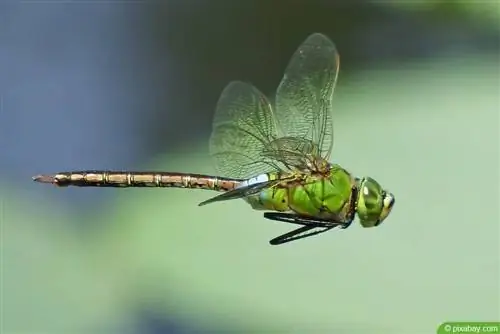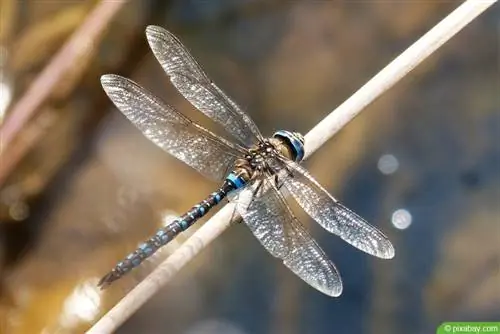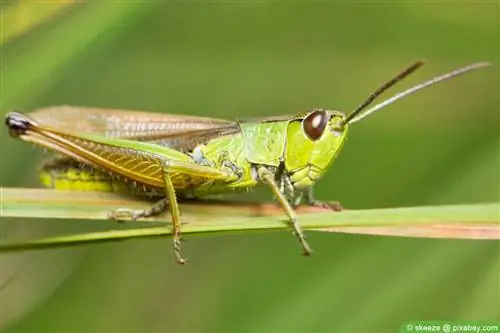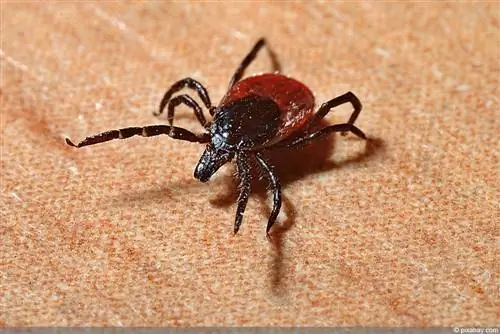- Author admin [email protected].
- Public 2023-12-17 03:39.
- Last modified 2025-01-24 12:45.
More than 5000 species of dragonflies are known worldwide. In Germany, the demoiselles, the darters, the azure damselflies and the rush damselflies are among the best-known representatives of the genus Odonata. They live near water. Hardly anyone can escape the charm of the insects with their silvery, shimmering wings. The question is repeatedly asked whether dragonflies can inflict injuries on humans.
The Sting of the Dragonfly
The fact is that all dragonfly species known in Germany have a stinger. The stinger, especially in female noble flies, reaches a frightening size. People used to believe that a single dragonfly was capable of killing a person or a horse. The fear of the insect's sting or bite was expressed in the common names
- Devil's Needle
- Snake Cutter
- Eye drill
We give the all-clear
The stinger looks more dangerous than it is. None of our native dragonflies can harm a person by stinging them. Even if the dragonfly's stinger is many times larger than that of the wasp, it is not half as dangerous. The dragonfly stinger is large but blunt. From a scientific point of view, it is not a stinger, but rather a so-called ovipositor. With this, the dragonfly cannot penetrate human skin or that of a horse. The ovipositor fulfills a completely different task; it is needed to lay eggs. Female dragonflies use it to pierce leaves or stems of aquatic plants and lay their eggs in them. The larvae hatch in spring and leave the plant.

The development from egg to finished dragonfly can take up to three years for individual species. The lifespan of a dragonfly, on the other hand, is very short. It is only three to eleven months. Bees and wasps, on the other hand, have stingers for defense. They can pump their poison into human skin via this stinger and quickly cause stabbing pain.
Info:
Did you know that dragonflies are one of the few insects that can even fly backwards or in place like a helicopter? The dragonfly eats in flight and even mating takes place in the air in some species.
Can dragonflies bite?
If these fascinating insects can't sting, maybe they can bite? The assumption is obvious, because in enlarged images the dragonfly appears like a monster. Today's macro photography capabilities can perfectly reinforce this fear. The dragonfly has powerful biting tools. These help in crushing and consuming their prey. Prey includes
- Mosquitoes
- Flying
- Butterflies
- Moth
- Beetle
- smaller conspecifics
Due to their powerful biting tools, dragonflies are able to shred even the solid chitin shells of beetles. People are completely uninteresting to the predatory insect. Nobody has to be afraid of a dragonfly bite. Representatives of the small pincer dragonfly (Onychogomphus forcipatus) have pincers in addition to their biting tools. This is also not suitable for causing harm to a person. It helps the male to embrace the female dragonfly during mating.
Don't be afraid of dragonflies

None of the native dragonfly species poses a danger to humans. However, humans and their impact on the environment represent a serious threat to the enchanting insect. All 80 Odonata species living in Central Europe are protected. It is forbidden to catch them or harm them in any other way.
By the way:
Dragonflies (Calopterygidae) are of great importance to conservationists. They live exclusively in clean flowing waters and allow conclusions to be drawn about the quality of the water.
If a dragonfly is about to buzz around you or if it happens to land on your arm, stay still. Enjoy this enchanting insect. You definitely don't have to be afraid. There is no danger to humans.






